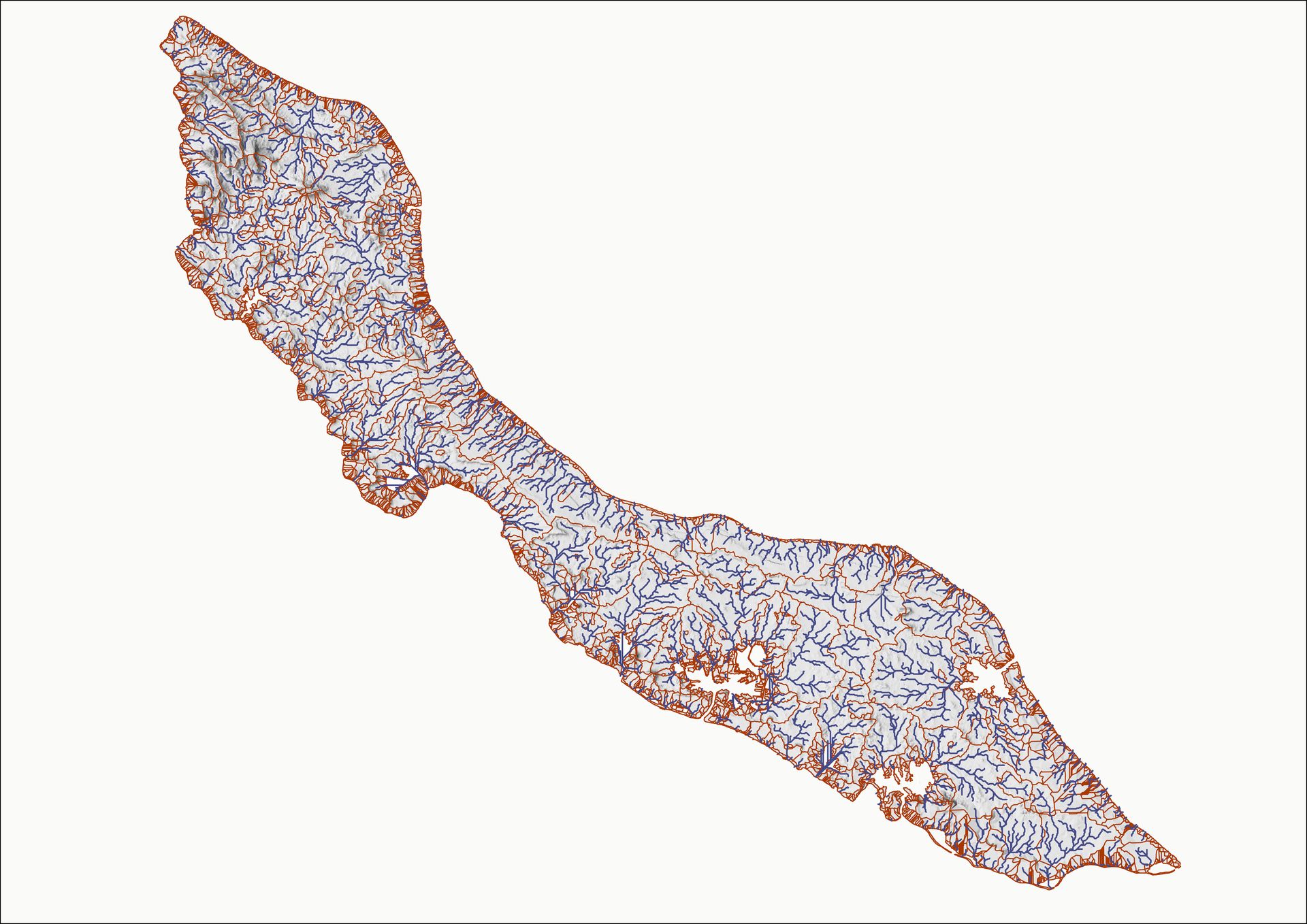Following the heavy rains last Saturday and the resulting damage, much discussion has arisen in society. Many people also have questions. Often it is not understood how the damage could have occurred. It therefore seemed good to provide some background information about drainage on Curaçao.
When it rains on Curaçao, a lot of rainwater comes down in a short time. This rainwater partly seeps into the soil and partly flows to the sea. The sea is the lowest point.
The Rooien (Gullies)
The so-called watershed runs along the length of Curaçao. The watershed is the line that connects the highest points between the south coast and the north coast. North of the watershed, the water runs via gullies to the north coast. South of the watershed, the water runs via gullies to the south coast. The gullies thus jointly ensure the natural drainage of rainwater from land to the sea. See also the attached gully map of Curaçao.

A gully that reaches the sea causes erosion (wear) of the soil. The erosion creates bays or inlets. Bays and inlets are simply the ends of the gullies. Sometimes bays are created by multiple gullies. People often think that the sea has created the bays and inlets. Nothing could be further from the truth. Bays and inlets are created by rainwater that reaches the sea via the gullies.
The Dams
Rainwater is fresh water. Fresh water is scarce on Curaçao. All rainwater that flows to the sea is therefore a great loss for the island. This was well understood in historical times. Therefore, dams were built in the gullies on the old plantations. The function of a dam was to retain part of the rainwater and let it penetrate into the soil. The water was thus stored underground in the form of groundwater. During the year, the underground water could then be brought back up through wells and used for agricultural purposes.
Often there were dam systems. Multiple consecutive dams were built in a gully, each retaining a part of the rainwater. At the beginning of the gully, these dams were still small. Closer to the sea, the dams were larger, because the gully also received water from side gullies and side gullies of side gullies. The amount of water behind a dam increases as it gets closer to the sea.
If you let the water flow over the edge of a dam, the dam will be damaged and may possibly collapse. A well-built dam therefore has a reinforced lower point (sakadó in Papiamento) where the water can flow through after the area behind the dam has filled with water. This is comparable to the opening, the so-called overflow, in a sink, which serves to prevent flooding.
So if it rains hard, not all the water will be stopped. The excess rainwater simply flows through via the sakadó. It was never the intention that a dam would stop all the rainwater. If it doesn't rain much, a dam can stop everything. However, in the event of heavy rainfall, water will always flow through.
And this is what happened last Saturday. The amount of rainwater was so great that the areas behind the dam immediately filled up and the excess water simply flowed through the sakadó to the sea. People sometimes think that the dam has broken through, while this is not the case. The dam just did its job.
Check the interview (in Dutch) on Extra Journaal
Dams and Buildings
Excess water always flows through via the sakadó. What needs to be prevented is building near the gully that carries the water from the sakadó further towards the sea. It can go well for a while, but if it rains a lot, the gully turns into a raging stream of water that destroys everything it finds in its path. Unfortunately, building in drainage areas is increasing. So that's asking for trouble.
Dams are not intended to protect buildings but to store water in the soil. Unfortunately, many dams have been sacrificed in recent years for the benefit of buildings. This means that even more water will flow faster through the gullies to the sea and can therefore cause more damage. It also means that the remaining dams will be more heavily loaded.
It also happens that a construction project changes the direction of the water, causing some dams to be more heavily loaded and other dams suddenly no longer receive water. This is not always taken into account when planning construction projects. Anyway, many surfaces are covered with asphalt and concrete during construction projects, so that the water can no longer penetrate into the soil. The amount of water to be discharged increases even more, which puts even more strain on dams.
Furthermore, the climate is changing. It's getting warmer. Warm air holds more water than cool air. This means that already now, and certainly in the future, the rain showers will become heavier. In the same time, even more water will flow through the gullies to the sea and the chance of damage will be even greater if construction has been built in the drainage areas.
Solving the problems that became visible last Saturday requires a broad approach. Of course, the maintenance and possible repair of dams is important, but a critical look must also be taken at existing and future construction in relation to rainwater drainage. Nature does not take into account the construction activities of man. So man will have to take into account the laws of nature. If these laws of nature are ignored, sooner or later it will ask for problems. And these problems will only increase in the future due to climate change.
ir. Paul Stokkermans
Paul Stokkermans is a retired agricultural engineer and former director of Carmabi and former policy officer of the then Department of Economic Affairs (DEZ) on Curaçao. He is currently director of Scientegia Solutions.
THE GULLIES AND DAMS OF CURAÇAO